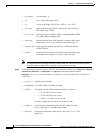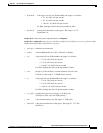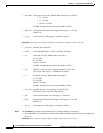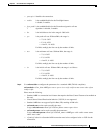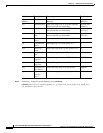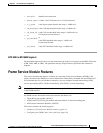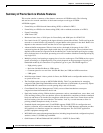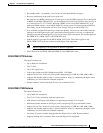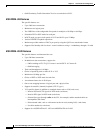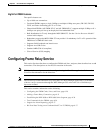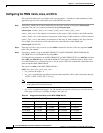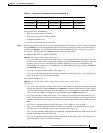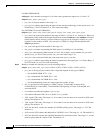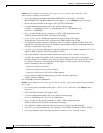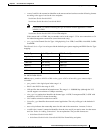
6-26
Cisco MGX 8230 Edge Concentrator Installation and Configuration
Release 1.1.31, Part Number 78-11215-03 Rev. B0, May 2001
Chapter 6 Card and Service Configuration
Frame Service Module Features
• OAM Continuity Traffic Generation Test for use on defective PVCs
MGX-FRSM-HS2 Features
The specific features are:
• Up to 2000 user-connections
• Maximum two logical ports
• Two HSSI lines with configurable line speeds in multiples of 56 Kbps or 64 Kbps
• Selectable DTE or DCE mode for each port
• In DCE mode, per port clock speeds of NxT1 and NxE1 up to 52 Mbps
• Various DTE/DCE loopback operations
• Maximum possible number of DLCIs per port by using the Q.922 two-octet header format
• Supports Hot Standby with less that 1 second switchover using 1:1 redundancy through a Y-cable
MGX-FRSM-HS1/B Features
The specific features and characteristics are:
• Up to 200 data connections
• In addition to data connections, support for:
–
LMI according to ITU-T Q.333 Annex A and ANSI T1.617 Annex D
–
OAM messaging
• Total card throughput of 16 Mbps
• Choice of operating card as either X.21 or V.35
• Maximum of 8 Mbps per line
• Choice of DTE or DCE mode for each line
• A maximum frame size of 4510 bytes
• One-to-one mapping between a logical port and a physical line
• Support for metallic (internal) loopback (ITU-T type 1)
• V.35-specific alarms (in addition to standard alarms such as LOS, and so on):
–
Inactive DCD and CTS signals in DTE mode (red alarm)
–
Inactive RTS signal in DCE mode (red alarm)
–
Selected line type (through cnfln on the CLI, for example) and the attached cable are
incompatible (red alarm)
–
Disconnected cable, such as a disconnect at the far end (creating LOS, a red alarm)
–
No cable attached (a red alarm)
• Support for ANSI/EIA/TIA-613-1993 and ANSI/EIA/TIA-612-1993



